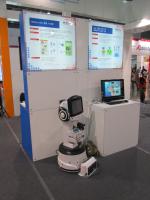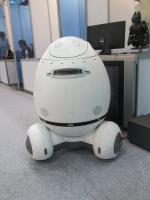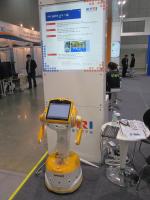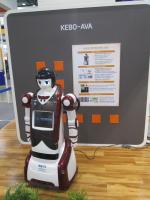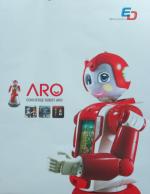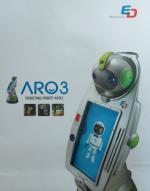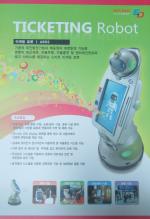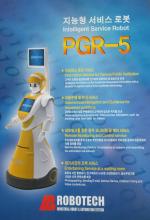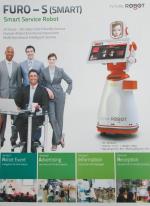ETRI (Electronics and Telecommunications Research Institute)
The Intelligent Cognitive Technology Research Department at ETRI has developed an elder care robot. It has been used in a study called “HealthBots” in collaboration with the University of Auckland.
The robot is a typical design with a mobile base and touchscreen. It incorporates a shelf that can be used to carry medical equipment.
|
Fig. 1: |
KIST (Korea Institute of Science and Technology)
There has been a lot of discussion in the media about plans to replace teachers with robots, or at least to make-up for a lack of English-speaking teachers. The CIR (Center for Intelligent Robotics) at KIST (Korea Institute of Science and Technology) has developed an avatar robot called “ENGKEY” for teaching English to students. It is a tele-presence platform designed to connect teachers into classrooms that would be otherwise unable to employ a physical teacher.
The robot has a novel design that has been described as “dumpy” or egg-like, which is supposed to make it appealing or at least non-threatening to younger students. It has 3 omni-directional wheels, a Kinect depth sensor in the chest, ultrasonic sensors around the waist and a screen that pops-up out of the top.
They also developed a similar model for elder care called “SILBOT”.
Website: www.irobotics.re.kr/eng_sub1_1/
|
Video 1: |
ETRI and Yujin Robot Co. Ltd
Robosem is another tele-presence robot designed for teaching English.
Academic paper:
Park et al., “Teaching Assistant Robot, ROBOSEM, in English Class and Practical Issues for its Diffusion”,
Advanced Robotics and its Social Impacts, 2011 PDF
|
Video 2:
Industrial design and features of ROBOSEM |
||
| Update: Here is a new product video for ROBOSEM. Video 3:
|
KETI (Korea Electronics Technology Institute)
A typical-looking service robot with an anthropomorphic head and a touchscreen in the chest.
Apparently it can mimic human gestures but I’m not sure of the specific applications.
ED Corporation
They have developed a series of robots called “ARO” that were designed to be used
as an information kiosk, hotel concierge or for purchasing tickets.
Website: www.ed.co.kr/eng/02_product/
|
Fig. 6: |
Robotech
They were displaying various service robots, such as their PGR-5 which is designed
to be used as an information kiosk or for telepresence.
Future Robot
They were demonstrating their FURO-S service robot, which is designed to be a mobile advertising billboard, an information kiosk or receptionist.
It has a familiar design, however the touchscreen is the largest I have seen for any service robot.
Website: www.futurerobot.com/en/
